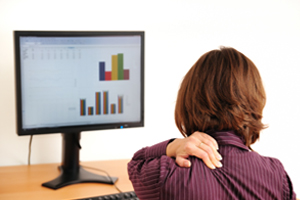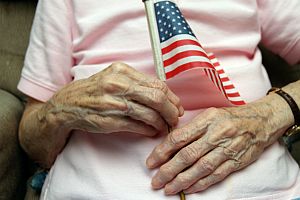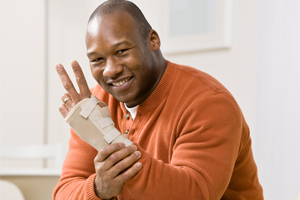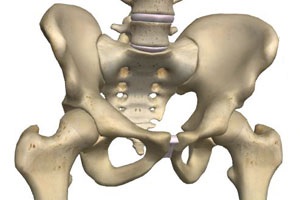Pain
6 Ways Chiropractic Care Can Reduce Back Pain
 If you suffer from back pain, you are not alone. Approximately 330,000 people visit a chiropractor each year due to back pain.
If you suffer from back pain, you are not alone. Approximately 330,000 people visit a chiropractor each year due to back pain.
The biggest problem with back pain is it can cause massive levels of energy loss through your day. As you get into maintaining your daily jobs and tasks while you’re experiencing pain, you’ll feel it and the pain can wear you down. Not only does it hurt but it can cause you to develop a poor attitude throughout the day because of dealing with consistent pain. Worse yet, it saps you of most if not all of your energy leaving none left at the end of the day for those who love you. This often to common fact about pain is what robs you of the quality time you value and the joy you and those around you cherish.
The pain can be debilitating and can also prevent you from keeping up with your health and fitness goals, but it doesn’t have to be this way.
There are two types of back pain, acute and chronic. Acute pain is short-lived, but can be excruciating, while chronic pain can last longer than three months.
Traditional Treatments for Back Pain May Not Be as Effective as Chiropractic Care
Although traditional methods for treating back pain, such as medicine, physical therapy, surgery and steroids temporarily relieve pain, they don’t correct the problem. These treatments are often painful and costly solutions too. That’s where chiropractic care comes in. It is an affordable answer that gets to the root of the problem. The basis of chiropractic care is to correct misalignments that are at the root of the pain. By restoring alignment, it allows for a healthy spine and can relieve headaches, aches and pains and reduced mobility.
The Importance of a Healthy Back
Back injuries can be painful and can deter you from participating in physical activities. Trying to maintain your fitness, stay active and compete in sports is difficult when back pain is interfering. A healthy body all starts with a healthy spine, which helps you remain strong, injury free, keeps you active, and allows you to look and feel your best with better energy leaving you with a better sense of confidence.
6 Ways Chiropractic Care Can Help Heal Your Back
Chiropractors aid your body’s ability to naturally heal itself. It can help you avoid surgery and doesn’t come with the side effects that most medications do. Spinal manipulation is a non-invasive treatment that effectively relieves back pain. They can help in the following ways:
- Medical-focused massage. A chiropractor can loosen and relax the back muscles by applying just the right pressure on specific muscles that are part of the pain complex happening in your back. This type of massage may include a prescribed massage from another professional or the use of an instrument or special table in the doctor’s office.
- Spinal manipulation. A chiropractor may use his or her hands or small tools to manipulate the spine and ease the muscle tension.
- Apply pressure. Chiropractors can apply a sudden force of pressure, sometimes with the help of a special table that moves with you, in order to move the joint back into its intended position.
- Treat injuries. A common practice to relieve chronic pain is called the flexion-distraction technique. It requires the use of a special table that stretches the spine. It helps treat to the damaged discs that result in chronic back pain.
- Physical therapy. Treating back pain doesn’t end when you leave the chiropractic office. The chiropractor often gives you exercises and physical therapy to do on your own to speed up the recovery process and reduce back pain.
- Referrals. Your chiropractor may also recommend seeing other health professionals for a well-rounded treatment plan or they may themselves provide a specialty “next step to health” service. The plan may include dietary changes, physical activity, change of habits and other lifestyle changes.
You don’t have to suffer from chronic back pain or refrain from physical activities. Dr. Nicole Muschett, your Bethlehem PA “running athlete’s choice chiropractor”, has the solutions you need to relieve the pain and get back to doing the things you enjoy most. Make an appointment today for a complimentary back pain consultation to find out what your back pain means and what typical natural remedies have been proven to work the best to finally alleviate your pain.
7 Tips for Maintaining an Active Lifestyle Despite Joint and Knee Pain
 A common reason for joint and knee pain is arthritis. It is the pain and stiffness many experience when trying to get comfortable. Although the pain of arthritis may fluctuate every day, one thing is clear, when it comes to your joints it sure doesn’t feel like they once were.
A common reason for joint and knee pain is arthritis. It is the pain and stiffness many experience when trying to get comfortable. Although the pain of arthritis may fluctuate every day, one thing is clear, when it comes to your joints it sure doesn’t feel like they once were.
Of the categories of arthritis people can get, the worse is autoimmune arthritis. It is a condition that stems from genetics in which the body attacks its own tissues and joints. It differs from other kinds of arthritis, such as osteoarthritis, which occurs most often in the elderly. Autoimmune arthritis can affect anyone, at any age, and can come on rather suddenly. It can affect different areas of the body depending on the day. Autoimmune arthritis can be the root cause of knee and back pain, which sometimes become apparent after a tough workout.
Symptoms of Autoimmune Arthritis
When trying to stay in shape and maintain an active lifestyle, autoimmune arthritis can be your worst enemy. Symptoms may include inflammation, fatigue, memory impairment and flu-like symptoms. You may not have the energy needed to get started or may feel the effects for several days after going for a run. The joint and knee pain may seem unbearable, and can keep you from doing the activities you enjoy. Finding a plan to relieve the pain is essential for living a strong, healthy life.
Treating Autoimmune Arthritis Can Increase Your Activity Level
Relieving achy joints and healing injured feet and knees allows you to play strong. You’ll be able to remain active in the sports you love, stay lean and energetic and maintain a competitive edge. By lessening the pain, you’ll be in a better mood, have an easier time losing weight or maintaining your healthy body, and have a better sense of confidence that allows you to stay healthy and active.
7 Tips for Managing Knee Pain to Stay Active
Although there is currently no cure for autoimmune arthritis, there are a few things you can do to manage the pain (many of the tips are also applied to cases of osteoarthritis):
- Early detection. While getting diagnosed for autoimmune arthritis can take several years, your best chance for curbing the symptoms and preventing it from becoming debilitating is to be diagnosed in the first six months. The initial signs include: unexplained injuries, stiff joints after participating in physical activities, non-static pain, locking joints, rashes, clumsiness and changes in appetite.
- Diet. An anti-inflammatory diet can reduce the painful side effects of arthritis. The diet resembles the Mediterranean Diet, which includes fruits, vegetables, lean meats, omega-3 fatty acids, whole grains and spices, while limited saturated fats and processed foods.
- Medication. Anti-inflammatory drugs are often the first line of defense for treating arthritis pain. Their goal is to suppress the immune system, thus relieving the pain. Unfortunately, these drugs come with unwanted side effects, including damage to the liver.
- Natural remedies. Using hot and cold therapy and magnet therapy are a few examples of the natural remedies for arthritic back and knee pain. Deep breathing, meditation and acupuncture are also natural ways to relieve the pain.
- Massage therapy. Massages can be used to relieve stress and anxiety, which allows for better rest and sleep. It also helps repair muscles that have to overcompensate for achy joints.
- Chiropractic care. Finding a quality Bethlehem, PA chiropractor can be the answer for relieving arthritis, back and knee pain, and increasing the range of motion in the joints. Chiropractic treatments can also help with flexibility and endurance. It works to slow the progression of the symptoms of arthritis so you’ll be able to enjoy walking, running and hiking or whatever activity it is that you love doing.
- Surgery. Joint replacement surgery is used as a last resort in severe cases of autoimmune arthritis. Once the joint is damaged or affects your ability to walk or handle daily functions, this may be an option for relieving pain and solving the problem.
Being diagnosed with autoimmune arthritis does not mean you have to give up your healthy lifestyle, drop your fitness goals or stop participating in physical activities. In fact, getting our unique and complimentary “Flexibility and Pain Relief Consultation” with local Chiropractor, Dr. Nicole Muschett, can be the first step towards getting the relief you need to stay active.
How to Stay Flexible and Combat Hereditary Arthritis
 The genetic makeup of some individuals makes them more apt to get particular types of arthritis than others — making it clear that genes do play a role in who gets arthritis and who does not. There are more than 200 different types of arthritis, and the bulk of them are not what medical researchers and clinicians would call “hereditary” conditions.
The genetic makeup of some individuals makes them more apt to get particular types of arthritis than others — making it clear that genes do play a role in who gets arthritis and who does not. There are more than 200 different types of arthritis, and the bulk of them are not what medical researchers and clinicians would call “hereditary” conditions.
A genetic predisposition doesn’t necessarily mean everyone will get arthritis. In fact, there are plenty of people who have a genetic predisposition for it but never suffer from this debilitating ailment.
An Example of Genetic Arthritis
Rheumatoid arthritis, for example, is when joints are inflamed due to the body’s immune system attacking the lining of those joints. Genes in a person’s body such as the HA-DR4 and HLA-DRB1 can increase the likelihood a person will get this type of arthritis. In fact, a report from Harvard Medical states that this type of arthritis affects two percent of the population and is more common in women than men.
Osteoarthritis, one that affects the elderly, is also tied to genetics. While it is the result of daily wear and tear on the joints, it has been noted that those with a genetic predisposition or a family history of osteoarthritis are more likely to get it in the future.
Developing Arthritis
The severity of arthritic symptoms can be influenced by more than just genetics. In fact, hormones can increase or decrease the amount of paint associated with arthritis. Some women have reported less arthritis pain when they become pregnant, only for the symptoms to return once their pregnancy is over.
How to Stay Flexible and Prevent Arthritis
Even if you are genetically predisposed to arthritis, there are things you can do to combat the symptoms and remain flexible so you reduce the signs of or pain of the disorder. There are common predisposing factors that can lead to acquiring arthritis. With those in mind, here are some things you can do to combat arthritis:
Age
Just because you’re older doesn’t mean you should ignore your body. There are aches and pains associated with getting older, and most people lower their level of physical activity because of it. But, if you remain active, perform daily stretches and keep your body healthy, you could reduce the impact of arthritis on your body.
Injury
Take care of your body to avoid excess injuries. Stretch before working out, seek out regular chiropractic care, and wear proper fitting shoes for a start.
Stay Hydrated
Mild dehydration can lead to short-term memory loss, less endurance and increased fatigue. Mild to moderate dehydration can actually impair your performance and lower your psychomotor skills. Drink at least eight 8-ounce glasses of water per day.
Inactivity
Inactivity can actually make arthritic pain worse. According to the Center for Disease Control, physical activity may reduce pain, improve body function and mood, and even improve the quality of life of arthritis sufferers. Try to get at least two and a half hours of moderate exercise per week.
Being Overweight
When you are overweight (or obese), you put excess strain on your muscles and joints, which can actually increase arthritic pain.
Hope for Arthritis Sufferers
While there might not be a cure for arthritis once it’s present, there are things you can do to make the pain less noticeable and improve your quality of life. Visiting your chiropractor for a check up to see what type you have or if you have arthritis at all is the first step. Dr. Nicole Muschett, the movement specialist Chiropractor of Bethlehem, PA, invites you to her clinic for a pain assessment so that you can see what stretches and preventative treatments can be done to lessen the pain associated with arthritis.
5 Simple Steps to Treat Minor Sprains and Strains
 Whether you’re an athlete, avid runner, habitual gym goer or just trying to stay active, it goes without saying that feeling flexible and strong is important to you. In fact, it’s likely why you keep active. You want to enjoy your favorite physical activities. As we get older, minor injuries can be frightening and discouraging as we try to understand what the pain means and how to best treat it.
Whether you’re an athlete, avid runner, habitual gym goer or just trying to stay active, it goes without saying that feeling flexible and strong is important to you. In fact, it’s likely why you keep active. You want to enjoy your favorite physical activities. As we get older, minor injuries can be frightening and discouraging as we try to understand what the pain means and how to best treat it.
Sprain vs. Strain
Sprains occur when a ligament is torn; strains happen when a tendon or muscle tissue is torn. Minor sprains and strains can transpire when performing the simplest of tasks around the house, at the gym or on the job—especially if the affected area is not accustomed to the motion. The resulting knee, back, ankle or wrist pain can be intolerable. You’ll likely be unable to perform your usual daily activities until the injury begins to heal.
The RICE and Restore Treatment
Thankfully, there are five simple steps that you can use at home to overcome such an injury. We call it the RICE and Restore method:
- Rest, get plenty of it. It’s important to rest the affected area or joint as this gives it time to heal without aggravating the tear. Endeavor to keep the area immobile, and avoid putting pressure on it. You will likely find the support of a sling helpful as the damaged tissue heals.
- Ice, put it on the affected area. If it all possible, ice the affected area as soon as the injury occurs. Ice will reduce swelling and inflammation. It’s important to continue icing the area during the first 24 hours following the injury. Afterwards, you can rotate between heat and ice to alleviate pain and keep any additional swelling down.
- Compression, use it to reduce pain and swelling. The worst part of any sprain or strain is the accompanying pain and swelling. It can be excruciating. Wrapping an Ace bandage around the injury can help. Be sure to wrap it snuggly, but not so tight that it restricts blood flow.
- Elevation, elevate the injured area. Elevation is another means of keeping unwanted and painful swelling down. Try keeping the injured area elevated for at least the first 24 hours, and continue to elevate as able afterwards.
- Restore and reestablish movement gradually. After a few days, the pain should subside. At this time, you’ll want to gently move the injured area. Your goal is to gradually restore flexibility and strength. Be careful not to overwork the injured area, otherwise you’ll risk further damage.
In most cases, these five steps will remedy a minor sprain or strain within a few days or weeks, depending on severity. Anti-inflammatory medication can help reduce pain and swelling.
Chiropractic treatments have also proven effective in reducing pain and increasing mobility. We provide a complimentary foot, ankle and knee pain consultation if you’re concerned about whether you have a sprain or strain and how serious it is. You can receive peace of mind by taking advantage of this offer.
It’s important to treat minor sprains and strains with care. By carefully administering proper care and conditioning, you’ll be back to your active lifestyle in no time.
How Your Hip May be Causing Pain in Your Knees and Back and What to Do to Stop it
 Have you ever experienced pain in your back or knees? It could be because of your hip joints.
Have you ever experienced pain in your back or knees? It could be because of your hip joints.
The joint that links your pelvis (a strong support structure on which your spine sits) to your legs is known as the hip joint.
Your hip joint is a synovial ball-and-socket joint which means it is made up of a round ball portion at one end of the thigh bone and the domed socket portion of your pelvic bone.
This anatomy is what allows great freedom of movement of your hip joint. It allows you to stand straight upright while still giving you the ability to bend, kick, run, jump and just be very mobile.
On the other side of it, because your hips are made up of this ball-and-socket construction, they are also very vulnerable to too much movement which can lead to shifting and pinching and eventual wearing down of the joint, injury and pain. This vulnerability along with its central location to affecting many other areas of your body can make the hip joint quite the bully when it’s not working well.
More stable joints like the elbow or knee, which are hinge joints, only allow a joint to move primarily one direction. And while they can affect bones and joints nearby, they do not do this to the extent the hip joint does.
Believe it or not, because of the great amount of mobility in the hip, you can sometimes acquire injury and pain in your hip, knees and back just from sitting too long.
To understand how this happens, you need to realize how the hip joint is given strength. To stabilize the hip joint, you have strong muscles surrounding and aiding it for movement. They work to give the hips strength and stability and provide you with the motion you love. However, when these muscles are kept in a shortened or tightened position too long, with prolonged sitting for instance, they may stay that way when you get up too.
This means powerful muscles are pulling tightly on the hip joints even though you’ve stood up and started walking around and they should be at a more lengthened and relaxed position.
One of these big powerful muscles is called your iliopsoas muscle. It attaches by your spine – or your back bones and at your thigh bone (the femur). It works to raise your leg forward and rotate it outward. When it stays too tight because of prolonged sitting, it can pull the ball of the thigh bone forward in the domed socket and can pinch the hip joint, leading to pain.
Additionally, this tight muscle may pull tight and steady enough that it causes you to walk bent forward. When you’re bent forward, you have gravity working against you on most areas of your body which puts more stress on your whole spine all the way to your neck. This may also cause painful pinching of the joints in your back.
And if all that doesn’t seem harmful to your body, well-being and ability to move at your best…additionally, if your iliopsoas muscles are left tight and shortened, they can put more stress on your knees because they rotate your legs outward. Walking with a slight outward rotation in your knees can cause the knee joint to be off balance, not work well and eventually lead to abnormal wear and tear and pain in your knees.
As you can see, a small imbalance just from the hip muscles can lead to bigger problems in other areas of your body if they are not taken care of. But a bully can only stay a bully if left unchecked. Make sure you pay attention to your body and if you’d like an experienced opinion about what’s happening with your hips, back, or knees, we’ve helped hundreds overcome pain that holds them back from moving and feeling their best.